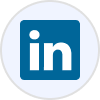Within two years of launch, 66% of new products fail. While most businesses ideate well, they fail to systemize their processes and distribute work. Product planning can cut through this complexity, turning abstract product ideas into clear, actionable steps your team can follow.
What you'll learn in this article:
- How to structure a complete product plan that adapts as you build
- Ways to use visual workflows for clearer team communication
- Practical steps to manage resources and timelines effectively
- Tips for keeping stakeholders engaged throughout development
Whether launching a new product or improving an existing one, this guide will help you create a plan that turns your vision into reality.
What is a product plan?
A product plan is a document that maps out what you want to build and how you'll build it. It can look a lot like this agile development template we've created. A product plan answers these five key questions:
- Why are you building and how will it help?
The first part of this question asks you to define your product's purpose and what you want it to achieve. For example: "A mobile app that helps people learn languages through five-minute daily lessons."
The answer to the next part enlists the main features your product needs. For example: audio lessons, progress tracking, and practice exercises.
- When will you build each part?
A clear schedule showing when you'll complete different pieces of the product.
- What do you need?
The team members, budget, and tools required to build your product.
- How will you launch it?
Your plan for getting your product to customers, including which customers you'll target first.
- How will you measure success?
This entails the numbers you'll track to know if your product is working well, like the number of users or customer satisfaction scores.
Why is a product plan important?
As Brian Tracy, an author and motivational speaker said, "Every minute you spend in planning saves 10 minutes in execution; this gives you a 1,000 percent return on energy.”
You need a product plan for one reason: to get things done by the right people within a set timeline while keeping everyone involved in the loop.
Clear direction
Product managers use product plans to guide feature decisions such as prioritization, budget, or timeline feasibility, while developers rely on them for technical requirements and deadlines. Without this, teams often spend more time than necessary on low-priority work or build features that don't match customer needs.
Key benefits include:
- Product and marketing teams can coordinate launch activities.
- Sales teams can prepare materials and customer pitches early.
Risk management
Good planning helps you spot and handle problems before they affect your project. You can track spending against estimates and identify potential delays early. This proactive approach is essential for complex projects where issues can quickly snowball.
The plan helps identify several types of risk, like:
- Complex features that may need extra testing time
- Ensuring you have the right people to complete tasks and adequate funding
- Competitor shifts and changing customer needs that may change how your product is perceived by the public.
Stakeholder briefing
Clear communication keeps everyone working together effectively. Regular status updates show progress against goals, help new team members get up to speed quickly, and ensure important details aren't lost.
Teams can track their work through:
- Weekly status meetings focusing on immediate challenges
- Monthly strategic reviews with leadership
- Clear documentation of key decisions and changes in business strategy.
Leadership can also track return on investment throughout development.
Product plan vs product roadmap
250px|700px|reset
加载中,请稍后
The terms "product plan" and "product roadmap" are sometimes used interchangeably. They sound like they're describing the same business activity, but in practice, they are vastly different.
A product plan is your detailed instruction manual. It includes specific steps, budgets, and resources needed to build your product. Think of it as your complete building blueprint — it shows exactly what you need and how to put it all together.
For example, a product plan might show:
- Detailed technical requirements for each feature
- The exact number of developers needed each month
- Specific testing procedures
- Breakdown of the marketing budget by channel
- Daily and weekly development tasks.
A product roadmap is your big-picture view. It shows the major points in your product's journey and helps everyone stay on the same page about where you're heading and the company objectives.
For example, a product roadmap for a mobile app would include:
- Q1: Launch the basic version with core features
- Q2: Add premium features
- Q3: Expand to new markets
- Q4: Release mobile version
A product plan might say "Hire two developers in March, begin coding user authentication system on March 15th, and complete testing by March 30th.”
While a product roadmap would simply state "Q1: Build user authentication system" without the detailed steps.
7 key steps to create a product plan
250px|700px|reset
加载中,请稍后
These seven steps will help you get started on building your product plan. Feel free to iterate your version based on this step-by-step framework.
Step 1: Define the product vision
Start by creating a clear vision for your product that will guide all future decisions. Your vision should be built on your product goals, target market, unique value proposition, and key objectives.
Product goals:
Your product goals should directly solve specific customer problems.
For example, if your vision is to simplify project management for remote teams, a corresponding goal could be to help remote teams complete projects 30% faster by improving communication and task tracking.
Target market:
Defining your target market helps sharpen your vision and makes it actionable. Instead of "small businesses," narrow it down to "marketing agencies with 10-50 employees who manage multiple client projects."
A precise vision addresses the unique challenges of your ideal customers, influencing both feature decisions and marketing strategies.
Unique value proposition (UVP):
Your unique value proposition should clearly showcase how your product uniquely delivers value.
For instance, if your vision emphasizes reducing workload for teams, your UVP could be, "Our tool automatically suggests task priorities based on team capacity and project deadlines, preventing work overload."
A distinct value makes your vision stand out in a competitive market.
Objectives:
Set specific, measurable objectives like "Reduce project planning time by 50%" or "Achieve 90% user satisfaction rate within six months of launch."
These objectives should align with your company's broader strategy and goals.
Together, these components form a cohesive framework that guides your team and resonates with your customers.
Step 2: Assess customer needs and conduct market research
Start by directly engaging with potential customers to understand their unmet needs. Use surveys, interviews, and observation to gather data to see how they currently address problems your product will solve.
For example, observe how project managers currently handle team communication and task assignment, and note any inefficiencies or frustrations that arise.
As you analyze customer feedback, look for recurring patterns in their priorities, comments, and requests. If multiple respondents mention struggling with time tracking, it signals a potential area for feature development.
Study current market trends that could affect your product.
For project management software, this might include the growing prevalence of remote work, increasing use of AI for task automation, or emerging data privacy regulations. Being on top of these trends helps you position your product to stay ahead of competitors.
For competitor research, conduct detailed comparisons of similar products, noting their pricing models, main features, and how they market themselves. Look for gaps in their offerings that your product could fill, such as a lack of good mobile apps or integration with popular tools.
With customer insights, market trends, and competitor analysis, you can build a product that meets customer needs and stands out in the marketplace.
Step 3: Map the customer journey
Create detailed user personas based on your research. Instead of just job titles and demographics, include their goals, frustrations, and daily routines to build a nuanced understanding of your audience.
For example, "Sarah, a marketing project manager who needs to coordinate work across time zones while keeping clients updated" is a well-rounded user persona.
Well-defined personas will help you tailor your product features and communication to address real user needs effectively.
Document every way users interact with your product across its lifecycle, from first discovering it to becoming long-term users. Include both digital touchpoints (website, app, email) and human interactions (sales calls, support chats).
Create detailed customer journeys showing how different users move through your product. For example, think of how a new project manager sets up their first project, adds team members, and tracks progress over time.
Step 4: Build a comprehensive resource plan
A resource plan looks at the time and money required to take a project off the ground. This helps you give your stakeholders and other parties a bird's-eye view of what to expect, when, and at what cost.
Resource planning should include:
- Number and type of developers needed for each phase
- Design team requirements
- Infrastructure and technical needs
- Budget allocation for tools and services
- Quality assurance resources for testing and debugging.
Remember to allocate resources in line with project timelines and adjust them for potential changes.
Dependencies to consider:
- Technical dependencies:
Build core platform features before dependent ones (like collaboration tools). Use Meegle's workflow system to map these clearly and spot potential bottlenecks.
- Team availability:
Check who's available and when, especially for team members with specialized skills needed across multiple areas. Use Member Schedule to see workloads and adjust as needed.
- External vendor timelines:
Add buffer time for vendor deliverables. Use the Gantt view to show these dependencies and see how delays affect connected tasks.
- System integration:
Plan time for testing compatibility with existing systems and fixing any issues that come up. Consider both technical work and user-facing changes.
- Testing and feedback:
Set aside enough time to test thoroughly and make improvements based on user feedback. Each feature needs multiple rounds of testing to ensure quality.
You can track all these dependencies in Meegle's visual planning tools. Regular check-ins help catch problems early before they affect your schedule.
Step 5: Build a comprehensive product roadmap
Break your development into clear phases, each with specific goals and deliverables.
For example:
- Phase 1: Core project management features (3 months)
- Phase 2: Team collaboration tools (2 months)
- Phase 3: Client reporting features (2 months)
- Phase 4: Mobile app development (3 months)
For each development phase, create a detailed timeline with specific milestones and dependencies. This helps the product development team understand how their work connects and when to expect deliverables.
Resource planning should include:
- Number and type of developers needed
- Design team requirements
- Infrastructure and technical needs
- Budget for tools and services
- Quality assurance resources.
Dependencies to consider:
- Technical requirements between features
- Team availability and scheduling
- External vendor timelines
- Integration with other systems
- Testing and review periods.
Step 6: Create a marketing and launch plan
Start planning your launch activities at least 3-4 months before release.
Key marketing components:
- Clear messaging that highlights your unique value
- Channel strategy for reaching target users
- Content plan for blogs, videos, and social media
- PR strategy and media outreach
- Sales enablement materials
Launch timeline example:
- Begin creating marketing materials three months before the launch.
- Start a beta testing program two months prior to the launch.
- Execute the PR campaign one month before the launch.
- During the launch week, host a virtual demo event.
- After the launch, regularly feature highlights and user success stories.
Step 7: Develop the product and prepare for launch
Break development work into manageable sprints, typically 2-4 weeks each. Each sprint should deliver something valuable that you can test with users.
Quality assurance plan:
- Define testing requirements for each feature.
- Set up automated testing where possible.
- Create a user acceptance testing process.
- Plan performance and security testing.
- Document bug reporting and fixing procedures.
Support preparation:
- Write clear product documentation.
- Create training materials for users.
- Set up customer support systems.
- Train support and sales teams.
- Prepare FAQ and troubleshooting guides.
Step 8: Plan for product lifecycle
Think about your product's long-term maintenance and evolution. Create a plan for regular updates and improvements based on user feedback and changing market needs.
Maintenance considerations:
- Regular security updates
- Performance improvements
- Feature enhancements
- Bug fixes and patches
- Technical debt management
Long-term planning:
- Schedule regular feature reviews.
- Plan major version updates.
- Monitor user satisfaction.
- Track technical performance.
- Prepare for eventual product retirement or replacement.
Collaborative product planning with Meegle
How can Meegle help you with your product plan?
Our features make it easier to make a concrete and cohesive product plan in the following ways:
- Simplify development workflow
- Simplify development workflow
250px|700px|reset
加载中,请稍后
Track dev tasks and identify roadblocks
Alt text: Meegle development task management interface showing prioritized tasks and assignments
- Syncs branches and commits with project tasks automatically
- Reduces manual updates between code and project management
- Tracks development progress in real time.
- Manage quality control
- Manage quality control
Quality is critical to any product plan. Meegle’s issue management dashboard simplifies bug tracking and resolution by connecting quality tasks directly to features.
250px|700px|reset
加载中,请稍后
Keep track of bugs as they're discovered and fixed
Alt text: Meegle's issue management dashboard shows bug tracking with assigned owners and fix status
The bug management system helps teams:
- Track issues tied to specific features
- Monitor bug counts and repair rates
- Link bugs directly to development tasks
- Generate quality metrics reports.
- Capture customer feedback
- Capture customer feedback
Meegle lets you centralize and act on customer feedback using an intuitive voting system for feature requests.
250px|700px|reset
加载中,请稍后
Collect and imbibe customer feedback into ongoing product development
Alt text: Meegle's customer feedback interface with voting system and feature requests
Meegle provides tools to:
- Collect input and prioritize features based on real user needs
- Use feedback to directly inform development and requirement documents
- Link feedback items to tasks, so nothing gets lost in translation
- Create detailed requirement documents
- Centralize communication for better team collaboration
- Centralize communication for better team collaboration
Communication sits at the heart of successful product planning, and Meegle makes it seamless.
One of its standout features is the automatic creation of dedicated chat groups for specific work items. When a new project or task is created, Meegle can automatically set up a corresponding Slack channel, ensuring team discussions stay organized and contextual.
250px|700px|reset
加载中,请稍后
Stay updated on relevant projects through messaging channels
Alt text: Meegle's team chat interface with bot integration and notification settings
The notification system keeps everyone informed without creating noise. Team members receive relevant updates through their preferred channels, whether that's within Meegle, via email, or through Slack integration. The @mentions feature enables quick communication, while contextual task commenting allows for detailed discussions right where the work happens.
- Keep stakeholders updated
- Keep stakeholders updated
Informing internal and external stakeholders becomes straightforward with Meegle's visual roadmap tools. Project managers can build comprehensive roadmaps that clearly show the product's journey from conception to launch. You can update these roadmap templates as work progresses.
Milestone tracking helps teams stay focused on key deliverables while maintaining visibility of the bigger picture. The dependency mapping feature ensures everyone understands how different parts of the project connect, reducing the risk of bottlenecks. Resource allocation becomes more strategic with tools that show team capacity and workload distribution.
- Optimize timelines with scheduling features
- Optimize timelines with scheduling features
Meegle offers sophisticated scheduling capabilities that make timeline management more efficient and responsive to product strategy needs. At its heart is a scheduling system that adapts to real-world project changes while maintaining clear visibility of progress.
250px|700px|reset
加载中,请稍后
Track members and their tasks
Alt text: Meegle project management interface showing member schedules and task assignments
The platform's Gantt view provides a visual timeline of project progress, where development teams can see both work items and sprint schedules at a glance. Project managers can easily adjust schedules through a drag-and-drop interface, with the system automatically calculating the impact on dependent tasks and resource allocation.
250px|700px|reset
加载中,请稍后
Track project timelines with time ranges and dependencies
Alt text: Meegle Gantt chart showing project timeline with team assignments and dependencies
What sets Meegle apart is its intelligent approach to resource management through the Member Schedule feature. This tool shows team members' workload distribution across multiple projects and work items, displayed in an intuitive Gantt chart format.
- View workload distribution across multiple project spaces.
- Make dynamic adjustments to balance team capacity.
- Plan schedules flexibly based on actual resource availability.
The system supports two powerful scheduling methods: "Aggregate by individuals" and "Dynamic calculation."
When multiple team members own a task, managers can either let each person set their schedules independently or have the system dynamically calculate schedules based on overall project timelines.
250px|700px|reset
加载中,请稍后
Look at member schedules to determine team capacities
Alt text: Meegle resource management view displaying team workload distribution and scheduling
For enterprise users, Meegle offers default schedule values that automatically calculate task timelines based on predefined rules.
For example, if a "Project Review" typically happens one week after "Initiate Review," the system can automatically schedule this, reducing manual adjustment time.
These rules can be customized at both the template level for consistency across projects and at the individual project level for specific needs.
The platform also distinguishes between working days and holidays in the schedule view, ensuring realistic timeline planning. Time ranges can be viewed in various units - months, bi-months, half a year, or a year - providing both detailed and big-picture perspectives of project timelines.
Create a well-defined product plan with Meegle
A successful product plan needs the right tools to bring it to life. Meegle does this by combining visual workflows, Git integration, and quality control in one platform.
We also offer a free version now, so you can have a look at how the platform works and utilize it before you make a decision.
Instead of creating static plans that quickly become outdated, Meegle enables an evolving approach to the product planning process.
Teams can continuously refine their plans based on:
- Market feedback and changing requirements
- Team performance and capacity
- New opportunities or challenges
- Stakeholder input and business priorities.





